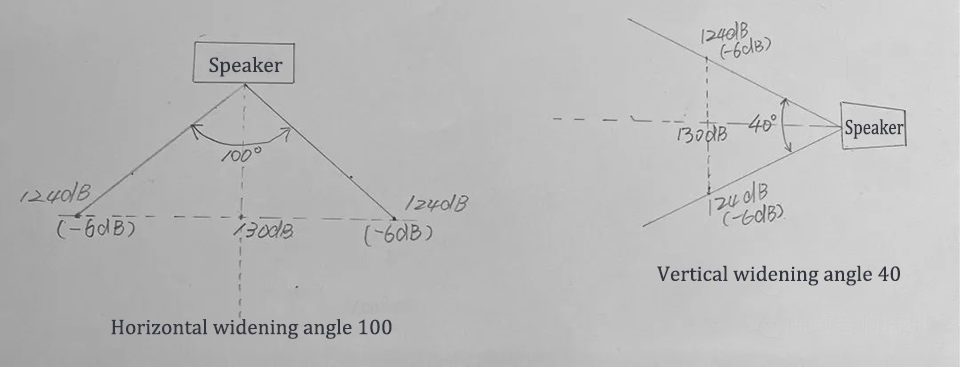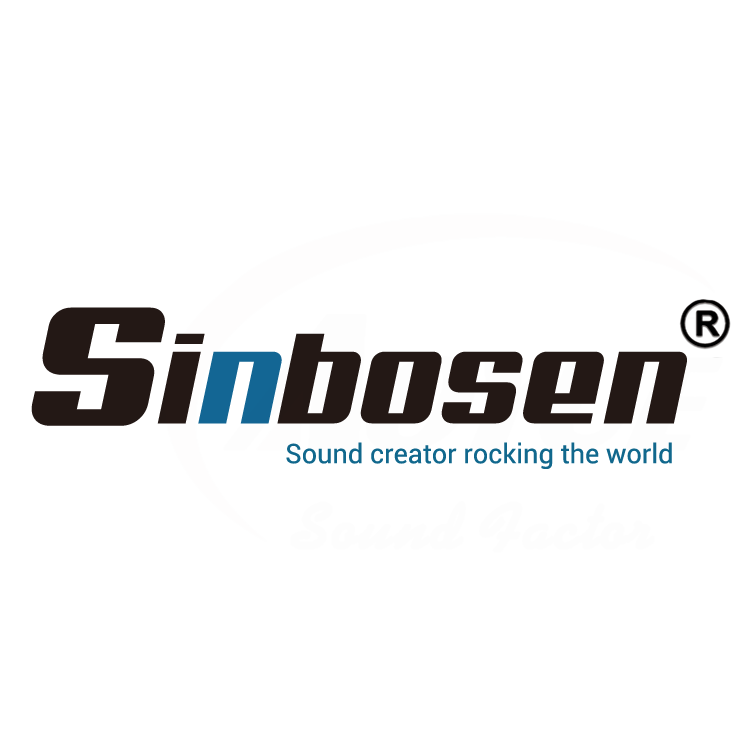What is the coverage of the speakers?
Views : 15463
Update time : 2022-04-28 10:48:04
When we use speakers, there is often an indicator of coverage on the technical indicators of speakers, as shown below-like the double 8 inch line array speaker KA208
This coverage range is also called the diffusion angle. What kind of indicator is it? Is there no sound beyond this range?
Let’s first talk about what this indicator means, look at the following figure:

For the sound emitted by the speaker, the listening position is the loudest in the direction of the axis of the speaker, that is, the sound pressure level is the highest. If the listening position deviates from the central axis, the sound pressure level will decrease, and the volume will decrease.
When the listening position deviates to a certain point in the horizontal or vertical direction, the sound pressure level is reduced by 6dB compared with the central axis, and this point is recorded. There will also be a point on the other side of the central axis where the sound pressure level is 6dB lower than the central axis.
Connect these two points and the center of the speaker with two lines. The angle between these two lines is the diffusion angle of the speaker in the horizontal or vertical direction. The space area between the two lines is the coverage area. scope.
For example, the example shown in the figure is a horizontal diffusion angle of 100 degrees and a vertical diffusion angle of 40 degrees.
Is there no sound beyond this angle or range of people?
No, for example, in the figure, the sound pressure level is reduced by 6dB at this angle. If the sound pressure level on the central axis is 130dB, at the position of the diffusion angle, it is 124dB.
Beyond this angle, it is not that there is no sound, but the sound pressure level of the sound is smaller than 124dB, maybe 120dB or 100dB. The farther away from the central axis, the lower the sound pressure level.
Note that this coverage or dispersion angle is usually measured with a 1000Hz signal, this angle is only a reference for the speaker's coverage capability. In fact, the lower the sound frequency, the larger the diffusion angle (range); the higher the frequency, the smaller the diffusion angle (range), and the sound propagation below 125Hz is basically omnidirectional.
Recommended whole sound system for 3000-5000 people

| KA208 | |
| 1 pcs 3 inch treble | 75cores 170magnetism |
| 2 pcs 8 inch bass | 51cores 140magnetism |
| MF rated Power/ Peak | 450W/8Ω 1600W/ Peak |
| HF rated Power/ Peak | 100W/8Ω 400W/ Peak |
| Frequency response | 40Hz-20KHz |
| Sensitivity | 101dB(1m/w) |
| Impedance | 4Ω |
| Weight | 27KG |
| Specification | 70x38x25cm |
| Wood case | 18mm plywood,galaxy black paint |
| Subwoofer | Double 8 inch line array |
| Transport Package | Strong Wooden Frame and Carton |
| Feature | Support Strong Bass Sound |
| Activity | Passive |
| Application | Commercial, Home,Party, Stage, KTV, Professional Performance |
This coverage range is also called the diffusion angle. What kind of indicator is it? Is there no sound beyond this range?
Let’s first talk about what this indicator means, look at the following figure:

For the sound emitted by the speaker, the listening position is the loudest in the direction of the axis of the speaker, that is, the sound pressure level is the highest. If the listening position deviates from the central axis, the sound pressure level will decrease, and the volume will decrease.
When the listening position deviates to a certain point in the horizontal or vertical direction, the sound pressure level is reduced by 6dB compared with the central axis, and this point is recorded. There will also be a point on the other side of the central axis where the sound pressure level is 6dB lower than the central axis.
Connect these two points and the center of the speaker with two lines. The angle between these two lines is the diffusion angle of the speaker in the horizontal or vertical direction. The space area between the two lines is the coverage area. scope.
For example, the example shown in the figure is a horizontal diffusion angle of 100 degrees and a vertical diffusion angle of 40 degrees.
Is there no sound beyond this angle or range of people?
No, for example, in the figure, the sound pressure level is reduced by 6dB at this angle. If the sound pressure level on the central axis is 130dB, at the position of the diffusion angle, it is 124dB.
Beyond this angle, it is not that there is no sound, but the sound pressure level of the sound is smaller than 124dB, maybe 120dB or 100dB. The farther away from the central axis, the lower the sound pressure level.
Note that this coverage or dispersion angle is usually measured with a 1000Hz signal, this angle is only a reference for the speaker's coverage capability. In fact, the lower the sound frequency, the larger the diffusion angle (range); the higher the frequency, the smaller the diffusion angle (range), and the sound propagation below 125Hz is basically omnidirectional.
Recommended whole sound system for 3000-5000 people











